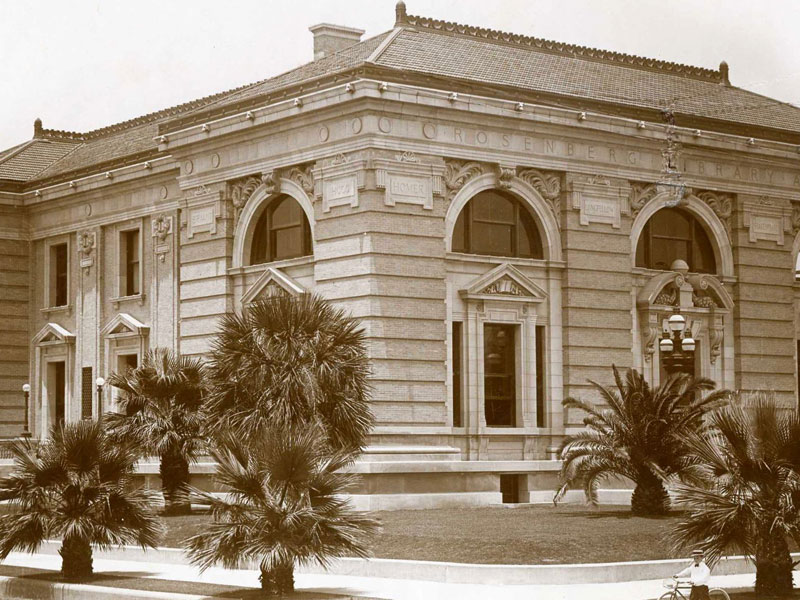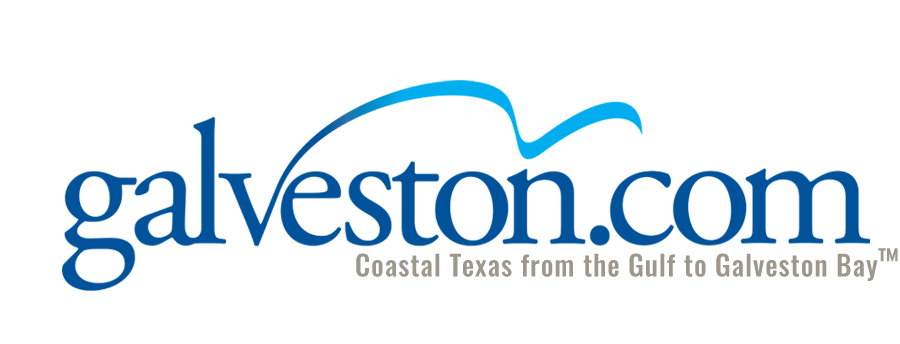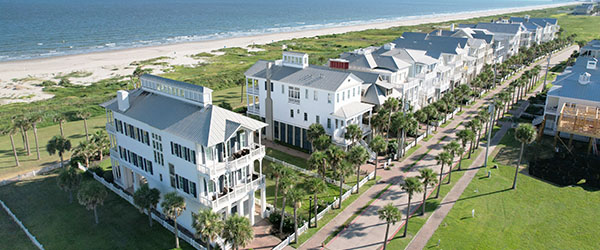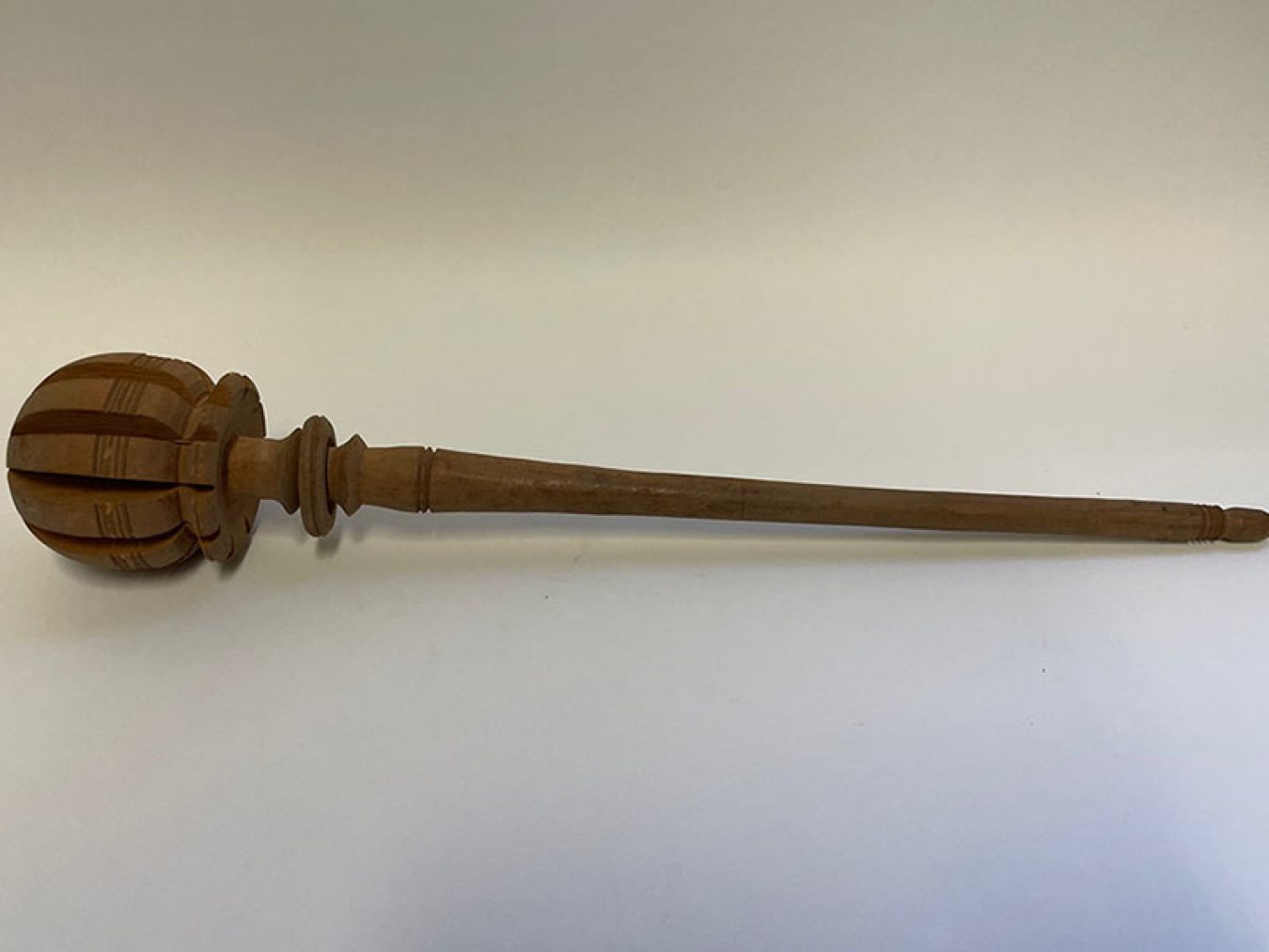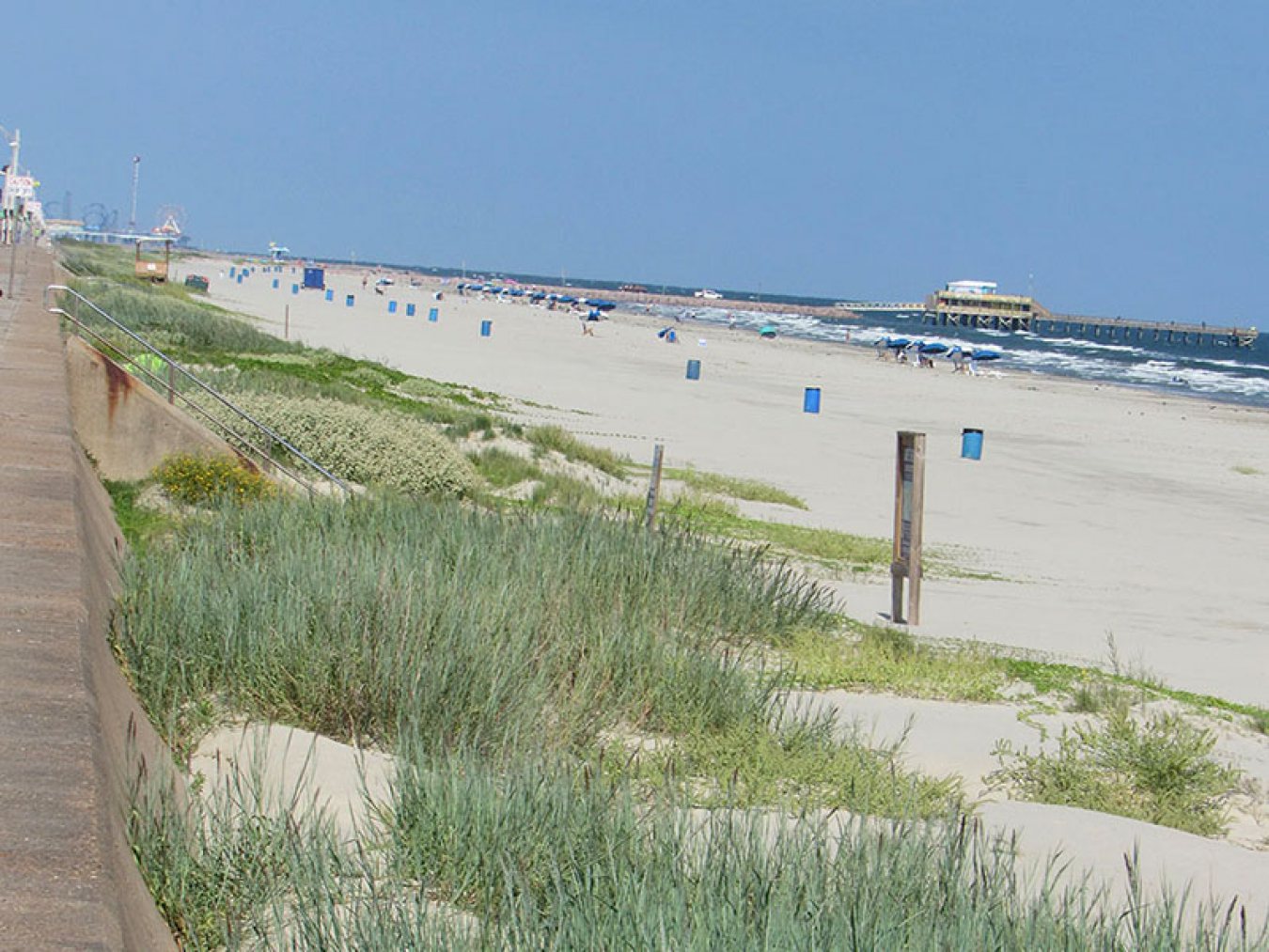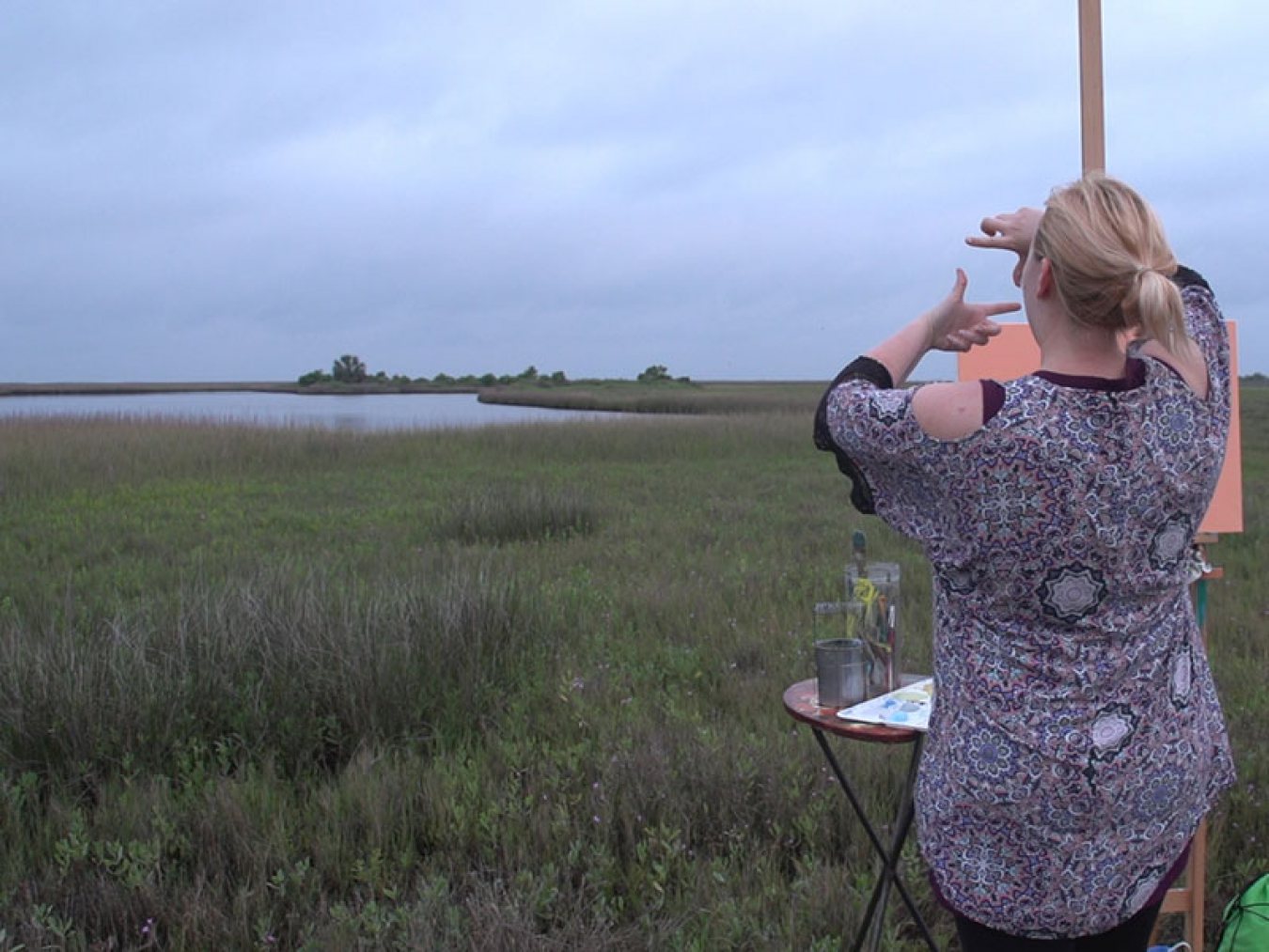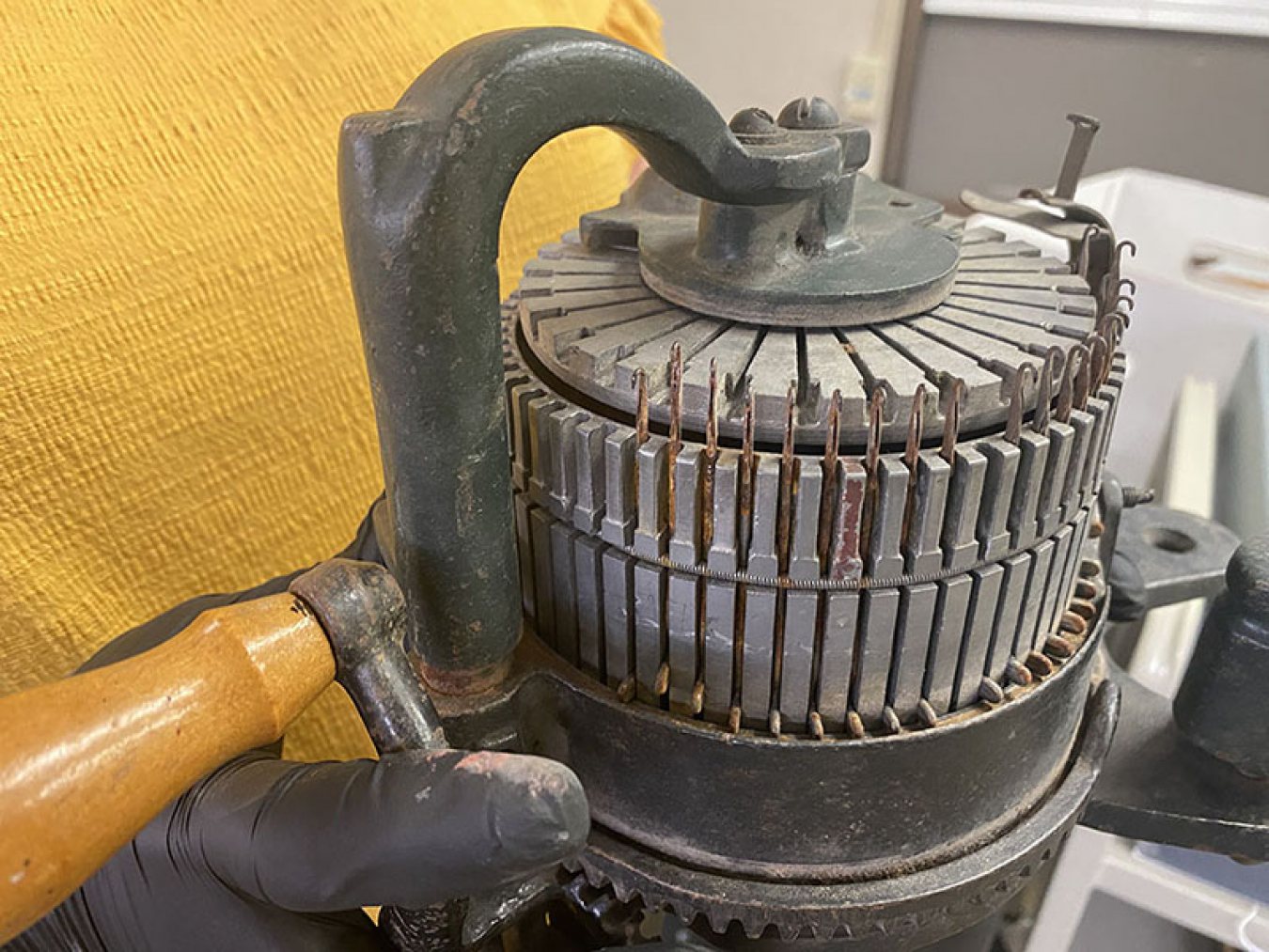Vintage Galveston Souvenirs
Rosenberg Treasure of the Month
During the month of July, the Rosenberg Library is displaying varying 20th century souvenirs that people bought to remember their trips to Galveston, including, but not limited to, a charming souvenir postcard, and a figurine of a purse with a pig peeking out.
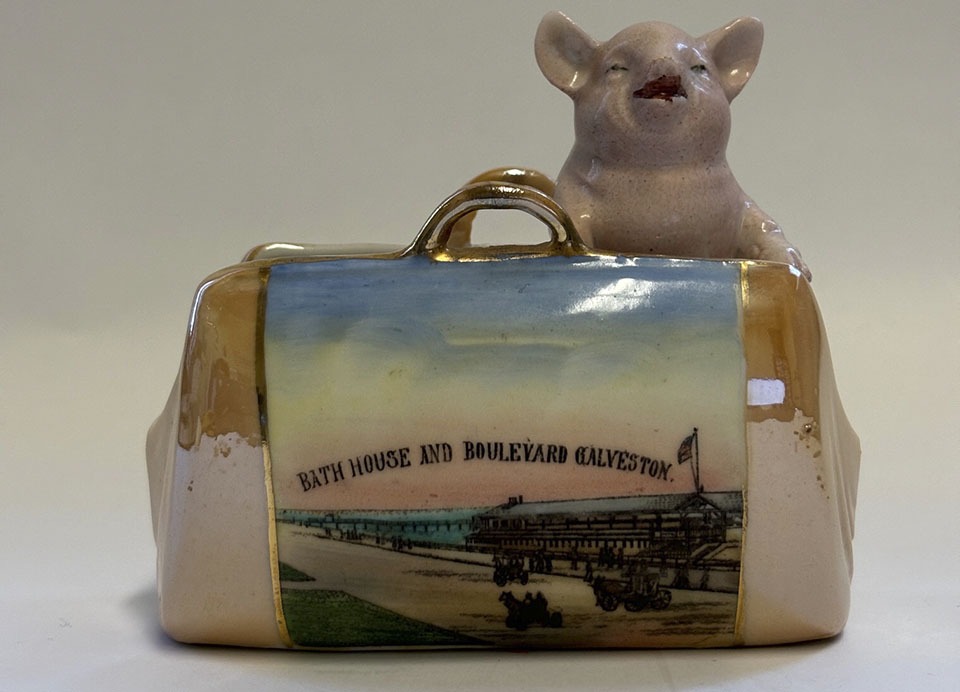
| Souvenir Purse with Pig | Rosenberg Library and Museum |
When you go on a trip somewhere, you may buy a souvenir or two to take home and remember your travels, or perhaps give to friends and family. Many people collect a specific type of souvenir from every country, city, museum, or national park that they visit. But have you ever wondered why souvenirs exist, or when they began? Our July Treasure explores the history of souvenirs and highlights some vintage Galveston souvenirs from our museum and archival collections.
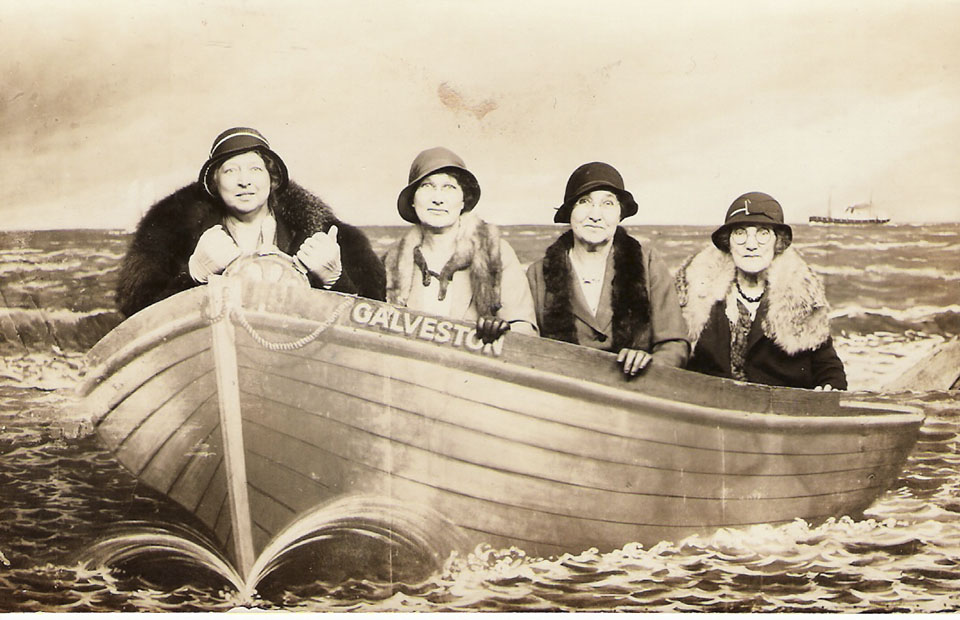
| Galveston Souvenir | Rosenberg Library and Museum |
What is a souvenir?
Oxford English Dictionary defines a souvenir as “something that is given or kept as a reminder of a place, person, event, etc.” Horace Walpole coined the word around 1775, from the French verb souvenir meaning “to remember.”
Humans have been collecting objects for millennia, but the objects we would recognize today as souvenirs originated in the Roman era. Pilgrims who visited religious sites would take holy water or oil back home with them in small vessels called ampullae that were worn around the neck like a necklace.
Travelers would also often take literal pieces of buildings, monuments, and other important sites with them as souvenirs. With the rise of global travel in the 18th and 19th centuries, this problem quickly worsened. The urgent need for historic preservation led to the foundation of groups dedicated to the protection of historic sites. One of the first groups like this in the United States was the Mount Vernon Ladies’ Association, formed in 1853 to address the deteriorating condition of George Washington’s home and estate after decades of vandalism by visitors.
As an alternative to these destructive mementos, a new souvenir industry sprang up as merchants began to manufacture cheap, profitable trinkets depicting historic sites. Picture postcards and other paper products grew in popularity around this time as they were inexpensive to produce and an affordable way to collect tangible memories of one’s travels and share them with others.
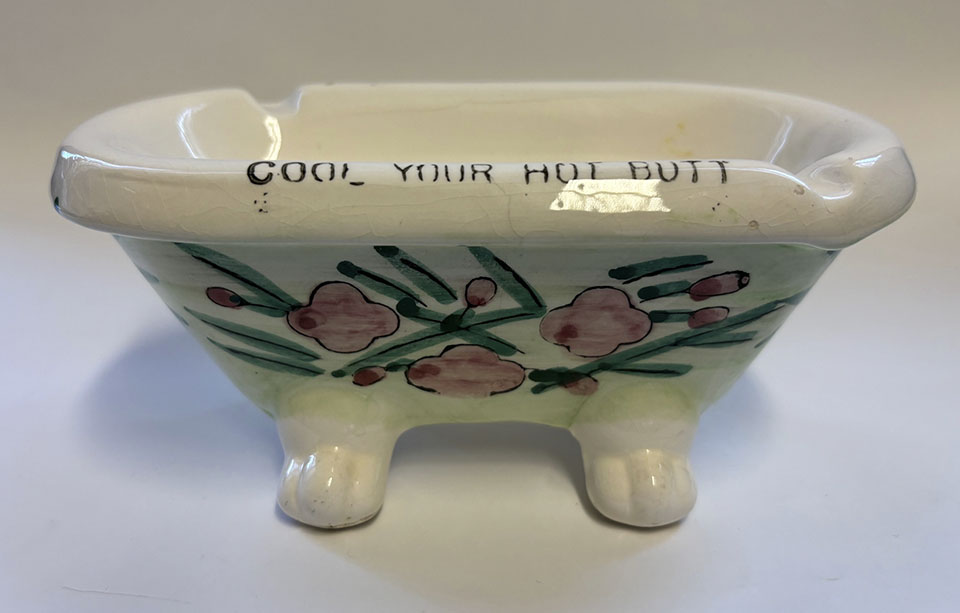
| “Cool Your Butt” Hot Tub Souvenir | Rosenberg Library and Museum |
“Souvenir of Galveston, Texas”
Due to its coastal location and warm climate, Galveston has long been a tourist destination, attracting millions of visitors. As early as the 1880s and 90s, souvenir vendors set up booths on the beach front, offering a variety of souvenirs including seashells, shark teeth, postcards, and more. Tourism continued to rise after the turn of the century, and more permanent souvenir shops were established near the train station and beachfront arcades. In particular, Murdoch’s Bath House became famous for its “instant” photo booth that turned images into souvenir postcards.
The Rosenberg Library Museum has many Galveston souvenirs in its collection, like these 20th century binoculars, china dish, and vase, all painted with scenes of Galveston. There is also a ceramic ashtray in the shape of a bathtub, with the words “Cool your hot butt here in my old tub.”
Perhaps the most interesting is this late 19th century souvenir fairing in the shape of a purse with a pig peeking out of the top. The purse features an image of Murdoch’s Bath House. Fairings are small ceramic boxes or figurines sold or given away as prizes at Victorian-era fairs. Many fairings were made in Germany, and pigs were a common motif since they were a symbol of fortune and good luck in German culture.
From the Roman era to the present day, souvenirs have allowed people to collect physical representations of their memories. While types of souvenirs have changed over the years, the value that we place on these often-simple objects remains constant. What kinds of souvenirs might you collect this summer?
The Treasure of the Month is located on the library’s historic second floor near the East Entrance. It can be viewed during regular library hours, 9:00 a.m. to 5:45 p.m. Monday through Saturday and from 9:00 a.m. – 8:45 p.m. on Tuesdays and Thursdays. For more information, please contact Ivy Albright, Museum Curator at 409.763.8854 Ext. 125 or at museum@rosenberg-library.org.
Luxury Vacation Rentals Available
Luxury Vacation Rentals Available
Rosenberg Library
Rosenberg Library has offered over a century of community service to the Galveston area, and is the oldest public library in Texas in continuous operation. The building itself was dedicated on June 22, 1904, the birthday of its patron, Henry Rosenberg. The Moody Memorial Wing opened in 1971, more than doubling the floor space and allowing for a children’s library, a history center, several galleries to showcase museum collections, and later, a computer lab. The Library accepted its first museum piece shortly after it opened in 1904. Since then, thousands of rare and interesting objects from around the world have been added to the collection. Each month they display a “Treasure of the Month”. Learn more by visiting the Rosenberg Library page and the Gifts of Henry Rosenberg section.